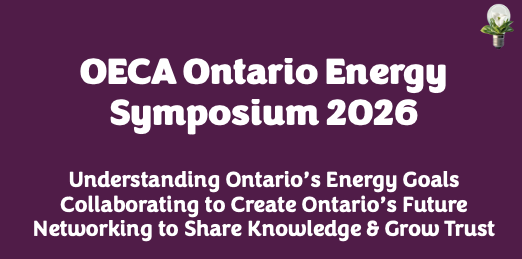Decision-Making – From Foundation to Energy
Decision-making hygiene is a structured approach that will ensure energy sector leaders make well-informed, unbiased, an effective choices.
At Ontario Energy Collaborative Association, we have emphasized the importance of:
- Structuring the Decision Process: Utilizing collabortive frameworks and tools to guide systematic decision-making.
- Clarifying Problems: Accurately defining the issues at hand to address the root causes effectively.
- Recognizing Cognitive Biases: Being aware of and mitigating personal and collective biases.
- Separating Facts from Assumptions: Basing decisions on verified data rather than preconceived notions.
- Encouraging Diverse Perspectives: Incorporating a full set of stakeholder viewpoints to enrich the decision-making process.
- Considering the Full Set of Impacts: Specifically, evaluating the future consequences of today’s choices on Ontario’s small to mid-size energy innovators and their clients.
Building upon this decision-making foundation, we must delve deeper into the necessity of gathering and comprehending factual data, especially concerning end-users and the economic ramifications of energy decisions.
Key takeaways included:
- Understanding Local Context: Recognizing that energy solutions must be tailored to specific community needs and environmental conditions.
- Economic Impact Assessments: Analyzing how decisions affect both consumers and the broader economy to ensure affordability and sustainability.
- Evaluating New Technologies: Conducting thorough cost-benefit analyses before adopting innovations to avoid unnecessary expenditures.
- Streamlining Regulatory Processes: Simplifying access to critical-transformative policy information to ensure compliance and optimize decision-making.
- Monitoring Consumer Behavior: Keeping abreast of changing usage patterns to align transformative services with actual demand.
While these practices are essential, their effectiveness is significantly amplified through collaborative decision-making. Engaging a broad spectrum of stakeholders: including municipal leaders, utility executives, energy entrepreneurs, and community members and fostering a holistic understanding and promotes solutions that are goal-aligned, innovative, and equitable.
The Role of Collaboration in Energy Decision-Making
Collaboration serves as a catalyst for:
- Enhanced Data Sharing: Pooling information from various sources leads to a more comprehensive understanding of energy challenges and opportunities.
- Diverse Expertise Integration: Combining knowledge from different fields encourages creative problem-solving and robust strategies.
- Shared Accountability: Collective decision-making distributes responsibility, building commitment for successful implementation.
- Community Engagement: Involving end-users ensures that decisions reflect their needs and garner public support.
Implementing Collaborative Practices
To embed collaboration into energy decision-making:
- Establish Cross-Sector Partnerships: Form alliances between public entities, private companies, and civil society to leverage diverse strengths.
- Facilitate Open Dialogues: Create platforms for transparent discussions, allowing all stakeholders to voice concerns and suggestions.
- Develop Shared Goals: Align on common objectives that address both community needs and sustainability targets.
- Implement Joint Decision Frameworks: Use co-created guidelines and tools to ensure decisions are balanced and inclusive.
- Monitor and Adapt Collectively: Regularly assess outcomes together and adjust strategies as needed to meet evolving challenges.
By integrating collaborative practices with rigorous decision-making hygiene, the energy sector can address complexities more effectively, leading to solutions that are economically viable, socially equitable, and environmentally sustainable.
Embracing this collaborative approach will enhance the quality of decisions and build resilient communities empowered to face future energy challenges collectively.


